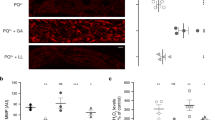Abstract
Electrolysis of water produces reduced water at the cathode and oxidized water at the anode. Electrolyzed-reduced water (ERW) has an extremely negative oxidation-reduction potential. ERW scavenges cellular reactive oxygen species (ROS) and suppresses single-strand breaks of plasmid DNA in bacteria. Here, we examined the effect of ERW on resistance to oxidative stress both in vitro and in vivo. Oxidative DNA damage in human lymphocytes was significantly alleviated by ERW by reducing cellular ROS levels. Caenorhabditis elegans grown in media prepared with ERW had increased resistance to oxidative stress caused by paraquat. We observed a significant effect of ERW on response to other stressors, including heat shock and UV-irradiation in C. elegans. These data indicate that the powerful anti-oxidant activity of ERW is due to its radical-scavenging activity and show, for the first time, that ERW could increase thermotolerance and resistance to UV-irradiation. These results suggest that ERW aids resistance to various environmental stresses.
Similar content being viewed by others
References
Beckman, K. B. & Ames, B. N. The free radical theory of aging matures. Physiol Rev 78:547–581 (1998).
Finkel, T. & Holbrook, N. J. Oxidants, oxidative stress and the biology of ageing. Nature 408:239–247 (2000).
Herman, D. Aging: a theory based on free radical and radiation chemistry. J Gerontol 11:298–300 (1956).
Martin, G. M., Austad, S. N. & Johnson, T. E. Genetic analysis of ageing: role of oxidative damage and environmental stresses. Nat Genet 13:25–34 (1996).
Melov, S. et al. Extension of life-span with superoxide dismutase/catalase mimetics. Science 289:1567–1569 (2000).
Sawada, M. & Carlson, J. C. Association between lipid peroxidation and life-modifying factors in rotifers. J Gerontol 42:451–456 (1987).
Oshima, S. et al. Inhibitory effect of beta-carotene and astaxanthin on photosensitized oxidation of phospholipid bilayers. J Nutr Sci Vitaminol (Tokyo) 39:607–615 (1993).
Gruber, J., Tang, S. Y. & Halliwell, B. Evidence for a trade-off between survival and fitness caused by resveratrol treatment of Caenorhabditis elegans. Ann N Y Acad Sci 1100:530–542 (2007).
Suh, J. H. et al. Oxidative stress in the aging rat heart is reversed by dietary supplementation with (R)-(alpha)-lipoic acid. FASEB J 15:700–706 (2001).
Lim, G. P. et al. The curry spice curcumin reduces oxidative damage and amyloid pathology in an Alzheimer transgenic mouse. J Neurosci 21:8370–8377 (2001).
Park, C. M., Hung, Y. C., Lin, C. S. & Brackett, R. E. Efficacy of electrolyzed water in inactivating Salmonella enteritidis and Listeria monocytogenes on shell eggs. J Food Prot 68:986–990 (2005).
Ichihara, T. et al. The efficacy of function water (electrolyzed strong acid solution) on open heart surgery; postoperative mediastinitis due to methicillinresistant Staphylococcus aureus. Kyobu Geka 57:1110–1112 (2004).
Kohno, S. et al. Bactericidal effects of acidic electrolyzed water on the dental unit waterline. Jpn J Infect Dis 57:52–54 (2004).
Lee, J. H. et al. Efficacy of electrolyzed acid water in reprocessing patient-used flexible upper endoscopes: Comparison with 2% alkaline glutaraldehyde. J Gastroenterol Hepatol 19:897–903 (2004).
Shirahata, S. et al. Electrolyzed-reduced water scavenges active oxygen species and protects DNA from oxidative damage. Biochem Biophys Res Commun 234: 269–274 (1997).
Lee, M. Y. et al. Electrolyzed-reduced water protects against oxidative damage to DNA, RNA, and protein. Appl Biochem Biotechnol 135:133–144 (2006).
Kim, M. J. & Kim, H. K. Anti-diabetic effects of electrolyzed reduced water in streptozotocin-induced and genetic diabetic mice. Life Sci 79:2288–2292 (2006).
Nakayama, M. et al. Biological effects of electrolyzed water in hemodialysis. Nephron Clin Pract 112: c9–c15 (2009).
Ye, J. et al. Inhibitory effect of electrolyzed reduced water on tumor angiogenesis. Biol Pharm Bull 31:19–26 (2008).
Johnson, T. E. et al. Gerontogenes mediate health and longevity in nematodes through increasing resistance to environmental toxins and stressors. Exp Gerontol 35:687–694 (2000).
Lithgow, G. J., White, T. M., Melov, S. & Johnson, T. E. Thermotolerance and extended life-span conferred by single-gene mutations and induced by thermal stress. Proc Natl Acad Sci U S A 92:7540–7544 (1995).
Sampayo, J. N., Olsen, A. & Lithgow, G. J. Oxidative stress in Caenorhabditis elegans: protective effects of superoxide dismutase/catalase mimetics. Aging Cell 2:319–326 (2003).
Murakami, S. & Johnson, T. E. A genetic pathway conferring life extension and resistance to UV stress in Caenorhabditis elegans. Genetics 143:1207–1218 (1996).
Yan, H. et al. Extension of the lifespan of Caenorhabditis elegans by the use of electrolyzed reduced water. Biosci Biotechnol Biochem 74:2011–2015 (2010).
Yan, H. et al. Mechanism of the lifespan extension of Caenorhabditis elegans by electrolyzed reduced waterparticipation of Pt nanoparticles. Biosci Biotechnol Biochem 75:1295–1299 (2011).
Singh, N. P., McCoy, M. T., Tice, R. R. & Schneider, E. L. A simple technique for quantitation of low levels of DNA damage in individual cells. Exp Cell Res 175: 184–191 (1988).
Arai, T. et al. Effects of intracellular reactive oxygen species generated by 6-formylpterin on T cell functions. Biochem Pharmacol 67:1185–1193 (2004).
Author information
Authors and Affiliations
Corresponding author
Rights and permissions
About this article
Cite this article
Park, SK., Kim, JJ., Yu, A.R. et al. Electrolyzed-reduced water confers increased resistance to environmental stresses. Mol. Cell. Toxicol. 8, 241–247 (2012). https://doi.org/10.1007/s13273-012-0029-1
Received:
Accepted:
Published:
Issue Date:
DOI: https://doi.org/10.1007/s13273-012-0029-1




